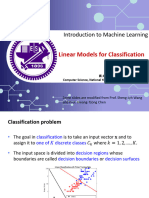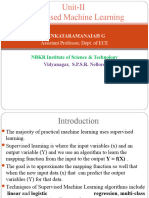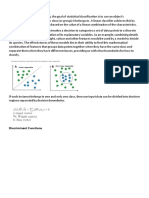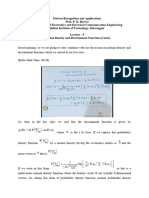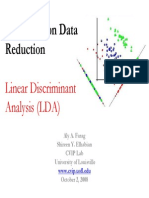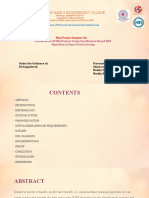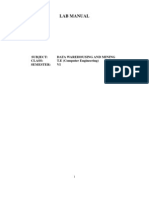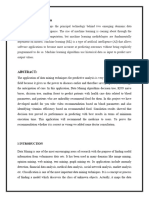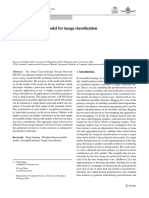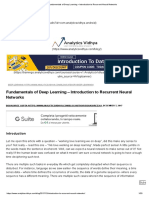0% found this document useful (0 votes)
22 views17 pagesML - Discriminant Functions
The document provides an overview of machine learning classification techniques, focusing on discriminant functions for two and multiple classes, and the use of least squares for classification. It discusses the Fisher Linear Discriminant Analysis (LDA) as a method to maximize class separation and its role in dimensionality reduction. Additionally, it includes examples and references for further reading on the subject.
Uploaded by
chirag nayakCopyright
© © All Rights Reserved
We take content rights seriously. If you suspect this is your content, claim it here.
Available Formats
Download as PDF, TXT or read online on Scribd
0% found this document useful (0 votes)
22 views17 pagesML - Discriminant Functions
The document provides an overview of machine learning classification techniques, focusing on discriminant functions for two and multiple classes, and the use of least squares for classification. It discusses the Fisher Linear Discriminant Analysis (LDA) as a method to maximize class separation and its role in dimensionality reduction. Additionally, it includes examples and references for further reading on the subject.
Uploaded by
chirag nayakCopyright
© © All Rights Reserved
We take content rights seriously. If you suspect this is your content, claim it here.
Available Formats
Download as PDF, TXT or read online on Scribd
/ 17
